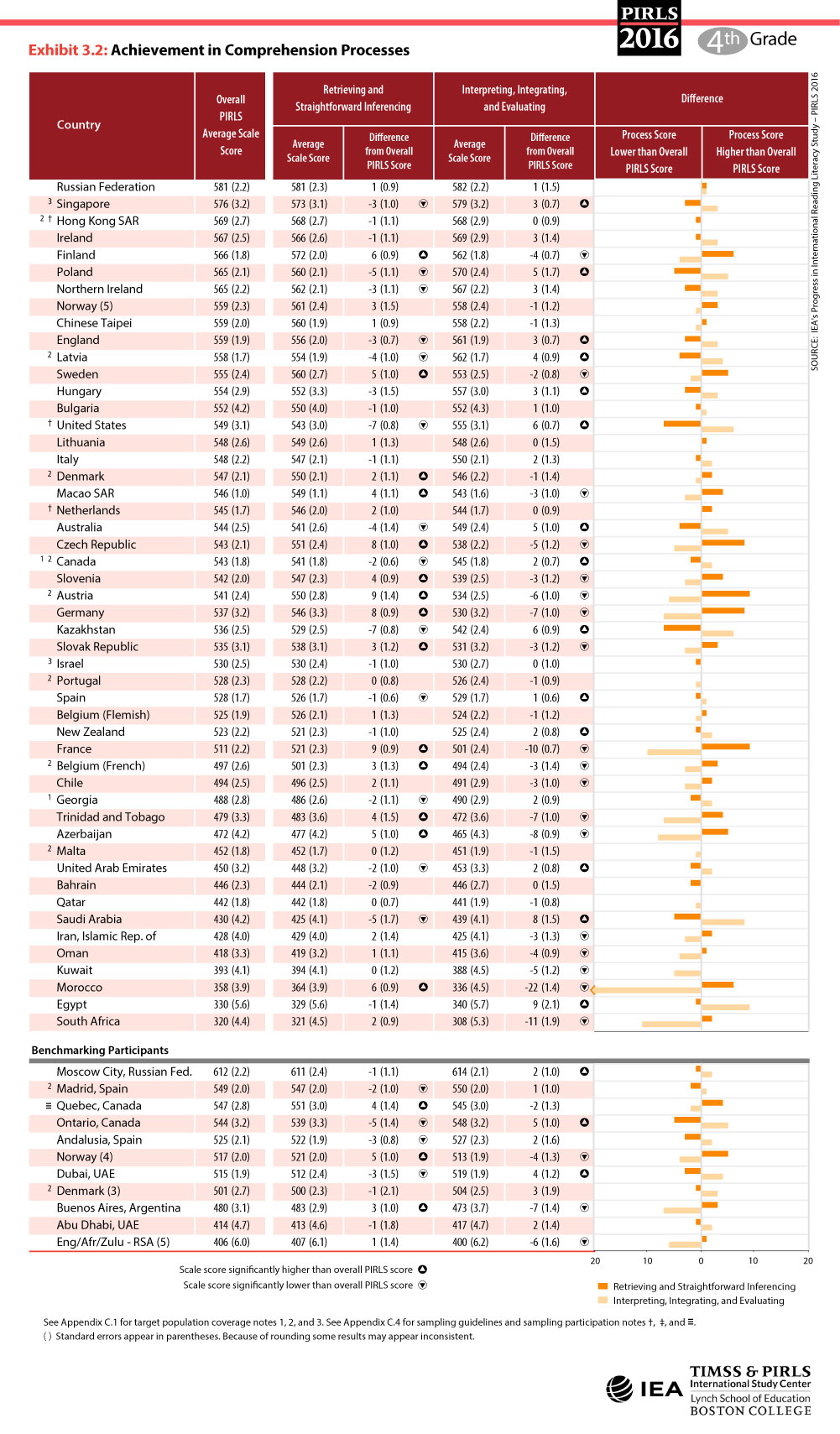Achievement in Comprehension Processes
To examine relative performance on the two process scales, PIRLS used item response theory (IRT) scaling to place achievement in each of the two processes on the PIRLS 2016 achievement scale. Exhibit 3.2 shows the overall average PIRLS achievement as well as the average scale score for each process with the difference between reading achievement overall and achievement in the process. Up and down arrows are used to indicate whether a country’s average score for a process is significantly higher or lower than its overall PIRLS average score. Generally, the higher performing countries overall had higher achievement in the reading comprehension processes and the lower performing countries had lower achievement. Nevertheless, most countries had a relative strength in one process or the other. The results within countries indicate that fourth grade students in the same number of countries had a relative strength in retrieving/straightforward inferencing as they did in interpreting/integrating/evaluating. Interestingly, fourth graders in fewer countries had a relative weakness in retrieving/straightforward inferencing compared with the number of countries with a relative weakness in interpreting/integrating/evaluating. Across the countries, the results show that 14 countries performed higher on the Retrieving and Straightforward Inferencing scale than on PIRLS overall, and 13 countries had lower achievement on that scale than they did overall. In comparison, 14 countries had higher achievement on the Interpreting, Integrating, and Evaluating scale than on PIRLS overall, while 18 countries had lower results.

